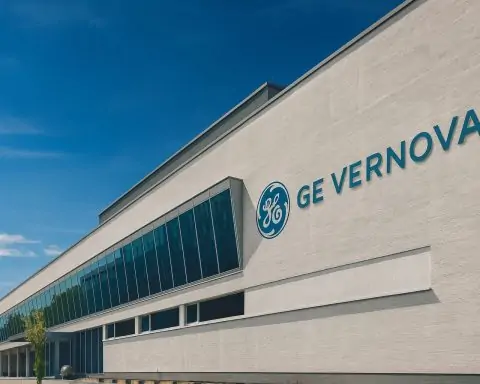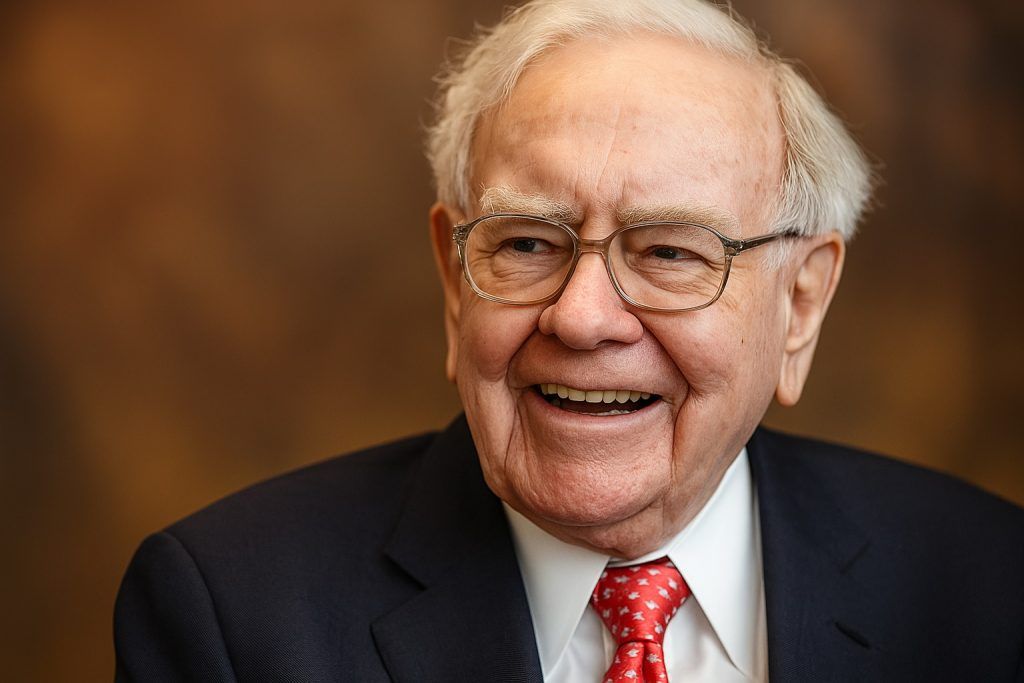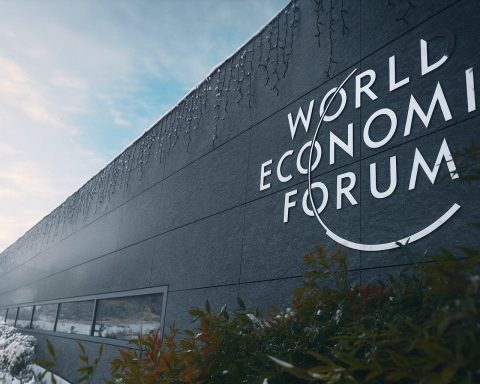- Chipmaker Seized, Shipments Halted: In late September, the Dutch government took control of Nexperia – a Netherlands-based semiconductor firm owned by China’s Wingtech – over national security concerns about technology transfer [1]. Beijing retaliated on 4 October by banning all exports from Nexperia’s Chinese plants, cutting off about 70% of Nexperia’s output [2]. Nexperia’s interim CEO informed customers on 26 October that shipments to its big Chinese assembly factory in Dongguan were suspended, officially blaming a “failure to comply with…payment terms” by the local management [3].
- Global Carmakers Alarmed: Nexperia produces huge volumes of inexpensive power-control chips (diodes, transistors, etc.) essential for cars’ electronics [4]. Automakers warned they were days away from halting production as chip reserves dwindled [5] [6]. Nissan said it had only enough Nexperia chips “to last until the first week of November” [7], and Honda even suspended a plant in Mexico due to the shortfall [8] [9]. Industry groups like Europe’s ACEA and the U.S. Auto Alliance urged urgent action, with one U.S. alliance official warning that if shipments don’t resume “quickly – it’s going to disrupt auto production in the U.S. and many other countries” [10].
- Trade War Escalation: The Nexperia clash became a flashpoint in the wider U.S.-China tech standoff. Wingtech had been added to a U.S. export blacklist in 2024, and Washington recently expanded rules to cover subsidiaries over 50% owned by listed entities [11] [12]. That put Nexperia at risk of U.S. sanctions, even as China’s export ban bit into Western supply chains. European officials raced to mediate: the EU’s trade chief Maroš Šefčovič and tech commissioner met with Chinese counterparts in Brussels, pushing to lift the chip embargo [13]. China’s hardball tactics signaled a new strategy of targeting Europe directly – “repeatedly…taking steps that bring European industry…to the point of choking them off,” observed analyst Andrew Small [14].
- Eleventh-Hour Truce: A breakthrough came at a summit between U.S. President Donald Trump and China’s Xi Jinping in South Korea at the end of October [15]. The White House plans to announce that Nexperia’s China facilities will resume chip shipments, as part of a broader trade truce, according to sources [16] [17]. China’s Commerce Ministry appeared to confirm an agreement, saying it will “comprehensively consider… and exempt eligible exports” of Nexperia chips to stabilize global supply chains [18]. Chinese reports suggested the U.S. also agreed to pause enforcement of its new “50% subsidiary” export rule (which would have effectively blacklisted Nexperia under Wingtech’s designation) as part of the deal [19]. A White House fact sheet outlining the terms of the truce – which also addressed rare earth mineral exports – is expected soon [20].
- Relief and Ongoing Risks: The immediate crisis appears averted, to the great relief of automakers worldwide [21] [22]. Stellantis (maker of Jeep, Fiat, Peugeot, etc.) had set up a “war room” to monitor the shortage and welcomed news of resumed supply [23]. However, the episode exposed the auto industry’s overreliance on a single supplier for basic chips. European chipmakers like Infineon, NXP, and STMicro are being urgently vetted as alternatives, but qualifying new parts can take months [24]. Wingtech’s stock initially plunged 10% on the Dutch takeover news [25], though it rebounded to around ¥45 by November 1 after hopes of a deal [26]. Carmaker shares remain volatile – Volkswagen stock, for example, hovered near multi-year lows (€90–95) as investors fretted about supply risks [27]. The long-term resolution is unclear: China is still demanding the Netherlands reverse its takeover of Nexperia, and the underlying U.S.-China export control tensions remain. European officials say this saga underscores the need for strategic chip stockpiles and “visibility” in supply chains under a new EU Chips Act [28].
Background: Dutch Takeover Spurs Chinese Backlash
Nexperia is a major producer of so-called “mature node” semiconductors – basic but ubiquitous components like diodes, transistors and voltage regulators used in cars and consumer electronics [29]. Originally part of Philips, Nexperia was sold in 2017 to Chinese investors and later fully acquired by Wingtech Technology, a Shanghai-listed electronics firm [30] [31]. For years this arrangement flew under the radar, but rising geopolitical frictions set the stage for conflict. In December 2024, the U.S. Commerce Department placed Wingtech on its Entity List, accusing it of aiding China’s efforts to acquire sensitive chip capabilities [32]. In October 2025, Washington tightened rules to automatically restrict subsidiaries of blacklisted firms [33] – a move squarely aimed at Nexperia.
On 30 September 2025, the Netherlands shocked the industry by invoking emergency powers to seize control of Nexperia [34]. Dutch authorities removed the company’s China-appointed CEO (Wingtech’s founder, Zhang Xuezheng) and installed their own management, citing “governance shortcomings” and fears Nexperia’s know-how might be siphoned off to China [35] [36]. Court documents later revealed that U.S. officials had been pressing the Netherlands to act for months, worried that without intervention Nexperia could end up on the U.S. export blacklist [37] [38]. In other words, Nexperia was caught in the crossfire of the U.S.–China tech war, as a European company with Chinese ownership.
Beijing responded swiftly and forcefully. Just days after the Dutch takeover, on 4 October China’s Ministry of Commerce imposed an export control order barring Nexperia’s China unit (and its contractors) from shipping any products out of China [39]. Effectively, Nexperia’s own factories in China were forbidden from exporting the chips they assembled. This was a stunning escalation – while most of Nexperia’s wafers are fabricated in Europe, around 70% of its chips were sent to China for final packaging and testing before distribution [40] [41]. Suddenly those finished chips were stuck behind China’s new “tech export iron curtain.”
Caught in the middle, Nexperia’s management tried to maintain a delicate stance. The company wrote to customers in late October saying it had suspended all deliveries to its Dongguan, China facility – one of its largest assembly plants – due to a “contractual” dispute over payments [42]. Insiders acknowledge this was largely a face-saving way to justify the halt amid the geopolitical standoff [43]. Nexperia’s interim CEO Stefan Tilger insisted the company “wanted to de-escalate the situation” and hoped to resume shipments if the payment issue was resolved [44] [45]. But whether or not that justification was a polite fiction, the supply of critical auto chips had been effectively choked off.
Auto Industry Sounds the Alarm
For global carmakers, the Nexperia stoppage set off alarm bells reminiscent of the 2020–2022 chip shortage – only this time the endangered chips were not advanced processors but basic parts that cost mere cents. Those cheap bits of silicon, however, are found in virtually every electronic device and vehicle. “Such chips are needed in almost every device that uses electricity,” Reuters noted [46]. In automobiles they play hidden but vital roles: connecting batteries to motors, controlling window lifts and seat adjusters, managing sensors, brakes, airbags, infotainment systems – you name it [47] [48]. A modern car can contain hundreds or even thousands of semiconductor components once you count all the tiny power control and sensor chips [49] [50]. If even a single essential chip is unavailable, production can grind to a halt, since you can’t ship a car with an incomplete electronics suite. And switching to a different chip supplier isn’t quick or simple: alternative parts must be tested and approved to meet safety standards, a process that “cannot be compressed into days or weeks” [51] [52].
By mid-October, reports emerged that European car manufacturers were only “weeks away” from exhausting their chip stockpiles [53] [54]. The European Automobile Manufacturers’ Association (ACEA) issued an urgent alert on 29 October that assembly lines might shut within days if Nexperia’s parts didn’t resume flowing [55]. “We urge all involved to redouble their efforts to find a diplomatic way out of this critical situation,” implored ACEA Director General Sigrid de Vries [56]. She noted automakers were already dipping into emergency reserves and “supplies are rapidly dwindling” [57] [58]. ACEA’s membership – which includes Volkswagen, BMW, Stellantis (Fiat/Peugeot), Mercedes, and others – said the disruption would affect “virtually all of our members” across Europe if not resolved [59] [60]. In Germany, the electronics industry association ZVEI bluntly warned of a “standstill in large parts of worldwide automotive production” if the export ban dragged on [61]. And it wasn’t just Europe: “This makes it a global problem. The larger the OEM, the larger is the risk that production gets affected,” analysts at Bank of America observed, noting that Nexperia chips are likely present in most vehicles worldwide [62] [63].
Automakers themselves began publicly warning and adjusting operations. Nissan’s COO told reporters at a Tokyo auto show that the Nexperia chip crunch “is a big issue,” admitting Nissan could only sustain production until early November on current stocks [64] [65]. Honda idled an assembly plant in Mexico in late October and started cutting shifts in the U.S. and Canada to conserve parts [66] [67]. Volkswagen (VW) – Europe’s largest automaker – signaled its German factories could only run about one more week before the shortage hit, and warned that missing chips would put its earnings targets at risk [68] [69]. VW’s CFO Arno Antlitz said any production downtime “would be another blow” to the company’s profits, which were already under pressure [70]. Mercedes-Benz and BMW said they were managing in the very short term thanks to buffer inventories, but both luxury carmakers began urgently scrambling for alternative chip sources [71] [72]. In the U.S., the Alliance for Automotive Innovation – representing Detroit’s Big Three (GM, Ford, Stellantis) as well as Toyota and others – pressed the White House for a fix; CEO John Bozzella emphasized that North American plants would soon be disrupted if Nexperia’s supply didn’t resume imminently [73].
Suppliers and electronics firms in the automotive ecosystem also kicked into crisis mode. Major Tier-1 parts suppliers like Bosch (which both consumes and produces chips) initiated contingency plans – tapping alternate vendors where possible and optimizing their inventories [74]. Bosch even cautioned it might have to furlough workers at its own semiconductor fabs if the stalemate continued [75]. Valeo, a French car electronics supplier, reportedly secured substitute chips for nearly its entire product range to ride out the storm [76]. Nonetheless, engineers say you cannot just drop-in a replacement chip overnight – even equivalent semiconductors from reputable firms like Infineon, NXP, or Texas Instruments require testing and recertification in each vehicle system [77]. “It would take too long to replace Nexperia with other suppliers,” concluded the BofA Global Research team, given the qualification hurdles [78] [79]. All this meant the only realistic short-term solution lay in political negotiations – to get Nexperia’s existing supply chain unfrozen. “The auto industry can only try to negotiate with China about the chip supply, probably via politicians in Europe and the US,” as the BofA analysts noted presciently [80] [81].
Diplomatic Scramble and Trade-War Jockeying
Facing an escalating tech standoff with devastating economic side effects, officials on three continents jumped into action. Throughout October, the Dutch government, European Union, and United States each engaged Beijing in talks to defuse the Nexperia situation. On the European side, high-level meetings were convened in Brussels. EU Trade Commissioner Maroš Šefčovič and Technology Commissioner Henna Virkkunen met with a visiting Chinese delegation in hopes of lifting the export ban [82]. After meetings on 1 November, the EU announced China agreed to “continue engagement” on export controls, with explicit plans to discuss the Nexperia export restrictions further [83]. European officials also leveraged other trade lever points – notably rare earth minerals. China around the same time had reintroduced curbs on exports of rare earth elements (vital for electronics and EV magnets) as a pressure tactic [84]. The EU sought, at minimum, a timeout on those measures. Reports hinted that China might pause its rare earth export ban for one year as part of broader negotiations [85], especially if the U.S. also made concessions.
The locus of deal-making, however, shifted to the United States and China’s top leadership discussions. With President Trump and President Xi slated to meet at an international summit in late October, Nexperia’s crisis became a bargaining chip in the broader trade talks between Washington and Beijing. Automakers had directly lobbied the White House, stressing that without intervention the U.S. auto sector would face factory shutdowns within weeks [86]. (The specter of mass layoffs in auto plants likely added urgency for the U.S., given the political sensitivity.) U.S. officials were also mindful that while Europe was bearing the immediate brunt, American car companies (and Japanese, and others) were not far behind in running out of Nexperia parts [87]. Quietly, U.S. and Chinese negotiators began crafting a mini-deal: the outlines involved China lifting its block on Nexperia exports, in exchange for some U.S. flexibility on tech sanctions and possibly a pause on new export curbs affecting China.
Those efforts culminated on 31 October 2025, when an agreement in principle was reportedly reached during talks on the sidelines of the South Korea summit. Reuters broke the news that the White House would soon announce Nexperia’s Chinese facilities are allowed to resume shipments [88]. Shortly after, China’s Ministry of Commerce publicly signaled an easing: “As a responsible major country, China fully considers the security and stability of… supply chains,” the ministry’s statement read, adding that authorities would “grant exemptions to…exports that meet the eligibility criteria” [89]. In diplomatic phrasing, that meant Beijing will let Nexperia’s chips go out, under certain conditions. Chinese officials, while never explicitly admitting the original ban was retaliation, pointed the finger at the Netherlands’ actions for causing the predicament. Beijing “blamed the Dutch government for disruptions to chip supplies” in state media, even as it lifted some controls [90].
Crucially, as part of the understanding, the U.S. appears to have offered a quid pro quo. According to reports in Chinese media, Washington agreed to suspend enforcement of its new rule that targeted subsidiaries of blacklisted firms [91]. In practical terms, this suggests the U.S. will hold off adding Nexperia to its export blacklist despite Wingtech’s ownership – averting another source of cutoff for the company. This reciprocal step allowed both sides to save face: China can claim it won an exemption for a key company, and the U.S. can claim its allies’ supply chains were safeguarded. Both Trump and Xi sought to project a win-win outcome. Indeed, U.S. officials characterized the understanding as part of a wider “trade truce” package. A fact sheet is expected to outline not only the Nexperia fix but also measures like the U.S. suspending a planned tariff hike and China pausing the rare earth embargo [92] [93]. While full details are pending, it’s clear that top-level diplomacy intervened just in time to prevent a looming auto industry shutdown.
Analysts note this episode marks an interesting twist in the U.S.-China-EU dynamic. Earlier in 2025, Europe had often been caught in the middle of the U.S.–China tech rivalry, sometimes suffering collateral damage. Now, China showed a willingness to apply direct pressure on Europe (through Nexperia and rare earths) to gain leverage – and it apparently succeeded in drawing in U.S. engagement. “It is no longer that Europe is collateral damage, it is China targeting Europe,” observed Andrew Small, a senior fellow at the German Marshall Fund, adding that Beijing’s hardball approach is meant to force quicker Western concessions [94]. The resolution via a U.S.-brokered truce also underscores that, ultimately, Washington remains a key power broker even in EU-China disputes. European officials, while relieved at the outcome, privately worry about the precedent of China using supply chain chokeholds as a bargaining tactic. This has only steeled the EU’s determination to reduce reliance on single-source suppliers and to coordinate closely with the U.S. on future tech security issues [95].
Crisis Eased: Shipments Resuming and Next Steps
With the announced partial truce, Nexperia is expected to restart shipments of chips from its Chinese facilities imminently – essentially ending a month-long freeze. Auto manufacturers worldwide greeted the news with visible relief. “This will be a relief for auto manufacturers worldwide who faced the imminent prospect of curbing production,” Reuters noted in its report on the deal [96] [97]. Within days, factories that were counting down the hours of available chip inventory should start receiving deliveries again. Honda, which had halted its Mexico operations, said it was monitoring the situation and would adjust plans accordingly, aiming to ramp production back up once supply stabilizes [98]. Stellantis confirmed it had been in close contact with U.S. officials during the negotiations; the company’s self-described supply chain “war room” can now stand down from high alert [99]. Japanese carmakers like Nissan and Toyota also expressed cautious optimism that they can avoid line stoppages – Nissan said if shipments resume in early November, it should avert the feared production outage that would have hit after the first week of the month [100].
On the Chinese side, Nexperia’s domestic unit had already begun operating independently to cushion the impact. During the export ban, Nexperia’s China arm resumed selling chips to local Chinese customers (in yuan) to keep factories running in China [101] [102]. However, those sales couldn’t help the likes of Volkswagen or Ford. Now, with export clearance coming, the Chinese subsidiary is likely to rejoin the global distribution network – though some frictions may remain. The Chinese unit pointedly accused its Dutch parent of raising “groundless” quality concerns about China-made products during the spat, and even threatened legal action [103]. There may be lasting mistrust between Nexperia’s European HQ and its Chinese division after this public fallout. It will be a management challenge to reintegrate operations smoothly. Observers will also watch how Wingtech behaves: the Chinese parent company has demanded that the Dutch authorities relinquish control of Nexperia now that (in its view) the crisis is resolved. For now, the Dutch government has given no indication it will reverse course – Nexperia remains under Dutch public custodianship pending a longer-term ownership decision [104]. This unresolved corporate tug-of-war could flare up again in the future.
Market reactions to the truce were telling. Shares of Wingtech Technology (600745.SS) – Nexperia’s owner – which had plunged by the 10% daily limit when the Dutch seizure was announced [105], have since clawed back some losses. By November 1, Wingtech’s stock bounced back near ¥45 on the Shanghai market [106], reflecting investors’ relief that its flagship subsidiary can do business again. Semiconductor stocks broadly saw mixed impacts: some European chip firms like NXP Semiconductors actually got a boost during the crisis, as they projected higher demand from carmakers seeking alternative suppliers [107]. Now, any “alternative supplier” bump may soften if Nexperia’s chips return to the market. Still, the trend of diversifying chip sources is likely to continue, which in the long run benefits those other chipmakers. Auto stocks, meanwhile, rallied modestly on the immediate news but remain under a cloud. Many car companies have just navigated a difficult third quarter with slim margins, and the threat of a production shutdown (even narrowly averted) highlighted their vulnerability. VW’s stock is down about 20% year-to-date and hovering at levels not seen in a decade [108], partly due to such supply chain fears. It may take time for investor confidence to fully return.
Looking ahead, industry experts are cautiously forecasting that full recovery will take several weeks. Even with permission granted, logistics need to restart – chips that sat idle in China need to be shipped and delivered, and backlogs prioritized. Some automotive plants have been operating with tightened schedules; they will need to ramp back to normal output, which could mean overtime or extra shifts once parts arrive to make up for lost time. There is also the question of which exports are deemed “eligible” under China’s criteria [109]. The Commerce Ministry’s wording suggests a case-by-case approval. It’s possible China might allow, say, shipments to certain countries or companies first or might hold back on others. Companies are likely to apply pressure behind the scenes to ensure their chip orders get fast approval. European officials will be watching closely to verify that Beijing follows through on its promises. If there are delays or selective licensing, the “resolved” crisis could quickly resurface.
Lessons Learned and Broader Impacts
This narrow escape carries bigger-picture lessons for the global auto and tech industries. Most immediately, it’s a stark reminder of how even low-end components can become choke points when geopolitics intervenes. During the earlier chip shortages, attention was on advanced processors, but this episode exposed that basic chips – often made by one or two firms – are equally mission-critical. As one commentator noted, these tiny parts usually “go unnoticed – but they are everywhere in a car’s electronics” [110]. Supply chain experts are urging automakers to map their supplier dependencies more thoroughly, down to tier-2 and tier-3 suppliers. Car companies will likely increase their buffer inventories of critical semiconductors (reversing the just-in-time ethos) in case of future shocks [111]. Indeed, EU Commissioner Virkkunen highlighted the need for reserve stockpiles of key chips as part of Europe’s upcoming Chips Act, arguing that transparency in the supply pipeline and strategic stocks could mitigate such crises [112].
Politically, the Nexperia saga may have widened the rift between China and Europe, at least in the short term. Europe sees China’s blanket export ban as an overreaction that “weaponized” supply chains; China sees the Dutch takeover as part of a U.S.-orchestrated campaign to contain its tech sector. Even after this truce, trust has eroded. The EU will move forward with policies to secure semiconductor autonomy (investing in local chip plants, supporting alternate packaging facilities outside China, etc.) [113] [114]. Nexperia itself has already been seeking new packaging partners in other countries (such as expanding capacity in Malaysia or perhaps shifting some assembly to Europe) to reduce reliance on its China plant [115] [116]. In China, the episode has fueled a drive for greater self-reliance and also firmer control over foreign-owned entities on its soil – evidenced by how Nexperia’s Chinese subsidiary asserted its independence during the dispute [117].
For the U.S. and China, this event became another bargaining chip in their complex rivalry. It shows that even as they clash over cutting-edge tech like AI chips, more “mundane” tech can suddenly become critical in negotiations. The Biden/Trump (current U.S.) administration was forced to balance its hardline stance on Chinese tech with the pragmatic needs of its industrial base – a reminder that broad sanctions can have unintended consequences for allies. The temporary suspension of the new subsidiary rule (if confirmed) indicates a willingness to calibrate policies when they threaten significant economic damage. Conversely, China demonstrated its willingness to inflict short-term pain on Western industries to gain leverage, but also that it will calibrate its response if it risks blame for a major global disruption. “China fully considers the security and stability of…international supply chains,” the Commerce Ministry insisted [118], positioning itself as acting responsibly once its point was made.
One striking quote from a Bank of America report encapsulated the takeaway for manufacturers: “The entire Western auto industry now gets a reminder that it should better not get too dependent on Chinese auto parts, even if they are cheaper.” [119]. Diversification and de-risking supply chains – rather than outright decoupling – will likely accelerate. Companies may qualify second or third sources for each critical component going forward, even if it raises costs. Governments in Europe and the U.S. are also likely to coordinate more on identifying single points of failure like Nexperia and ensuring contingency plans (such as diplomatic channels or stockpile arrangements) are in place.
In summary, the Nexperia chip crisis of late 2025 nearly brought global car production to its knees, but an agile diplomatic resolution prevented the worst. A last-minute trade truce between China and the U.S. has reopened the flow of crucial auto chips [120] [121], relieving factories from Japan to Germany to Michigan. Yet the crisis cast a long shadow: it highlighted the fragility of globalized supply chains amid geopolitical rivalry, and it has galvanized industry and policymakers to avoid being caught off-guard again. For now, cars will keep rolling off assembly lines, but the message is clear – in the era of chip wars, even a penny-part can have outsized strategic importance.
Sources
- Jasper Jolly & Lisa O’Carroll, The Guardian: “Nexperia halts chip supplies to China in threat to global car production” (31 Oct 2025) [122] [123]
- Lisa O’Carroll, The Guardian: “EU carmakers ‘days away’ from halting work as chip war with China escalates” (29 Oct 2025) [124] [125]
- David Shepardson, Reuters: “US to announce Nexperia’s China facilities will resume shipments, source says” (31 Oct 2025) [126] [127]
- Che Pan & Wen-Yee Lee, Reuters: “Exclusive: Nexperia’s China unit resumes chip sales to domestic distributors, sources say” (23 Oct 2025) [128] [129]
- Toby Sterling, Reuters: “Dutch seizure of Nexperia followed US pressure over Chinese CEO” (14 Oct 2025) [130] [131]
- Marcin Frąckiewicz, TechStock² (ts2.tech): “Car Factories on the Brink: China-Dutch Chip Clash Sparks Global Auto Crisis – Trade Deal Offers Hope” (1 Nov 2025) [132] [133]
- Navamya Acharya, Investing.com: “Can the Nexperia drama trigger a new chip shortage?” (26 Oct 2025) [134] [135]
References
1. www.reuters.com, 2. www.reuters.com, 3. www.theguardian.com, 4. www.reuters.com, 5. www.theguardian.com, 6. www.theguardian.com, 7. www.theguardian.com, 8. www.theguardian.com, 9. www.reuters.com, 10. ts2.tech, 11. www.reuters.com, 12. www.reuters.com, 13. www.theguardian.com, 14. www.theguardian.com, 15. www.reuters.com, 16. www.reuters.com, 17. www.reuters.com, 18. www.reuters.com, 19. ground.news, 20. www.reuters.com, 21. www.reuters.com, 22. www.reuters.com, 23. www.reuters.com, 24. ts2.tech, 25. ts2.tech, 26. ts2.tech, 27. ts2.tech, 28. www.theguardian.com, 29. www.reuters.com, 30. www.investing.com, 31. www.investing.com, 32. www.reuters.com, 33. www.reuters.com, 34. www.reuters.com, 35. www.theguardian.com, 36. www.reuters.com, 37. www.reuters.com, 38. www.reuters.com, 39. www.reuters.com, 40. www.reuters.com, 41. www.reuters.com, 42. www.theguardian.com, 43. ts2.tech, 44. www.theguardian.com, 45. ts2.tech, 46. www.reuters.com, 47. www.reuters.com, 48. www.reuters.com, 49. ts2.tech, 50. www.investing.com, 51. ts2.tech, 52. ts2.tech, 53. www.theguardian.com, 54. www.theguardian.com, 55. www.theguardian.com, 56. www.theguardian.com, 57. www.theguardian.com, 58. www.theguardian.com, 59. ts2.tech, 60. ts2.tech, 61. ts2.tech, 62. www.investing.com, 63. www.investing.com, 64. www.theguardian.com, 65. ts2.tech, 66. www.theguardian.com, 67. www.reuters.com, 68. www.theguardian.com, 69. ts2.tech, 70. ts2.tech, 71. www.theguardian.com, 72. ts2.tech, 73. ts2.tech, 74. ts2.tech, 75. ts2.tech, 76. www.bloomberg.com, 77. ts2.tech, 78. www.investing.com, 79. www.investing.com, 80. www.investing.com, 81. www.investing.com, 82. www.theguardian.com, 83. ts2.tech, 84. www.theguardian.com, 85. www.theguardian.com, 86. www.reuters.com, 87. www.reuters.com, 88. www.reuters.com, 89. www.reuters.com, 90. ground.news, 91. ground.news, 92. www.theguardian.com, 93. www.reuters.com, 94. www.theguardian.com, 95. www.theguardian.com, 96. www.reuters.com, 97. www.reuters.com, 98. www.reuters.com, 99. www.reuters.com, 100. www.reuters.com, 101. www.reuters.com, 102. www.reuters.com, 103. www.reuters.com, 104. seekingalpha.com, 105. www.bloomberg.com, 106. ts2.tech, 107. ts2.tech, 108. ts2.tech, 109. www.reuters.com, 110. ts2.tech, 111. www.theguardian.com, 112. www.theguardian.com, 113. www.reuters.com, 114. www.reuters.com, 115. www.reuters.com, 116. www.reuters.com, 117. www.reuters.com, 118. www.reuters.com, 119. www.investing.com, 120. www.reuters.com, 121. www.reuters.com, 122. www.theguardian.com, 123. www.theguardian.com, 124. www.theguardian.com, 125. www.theguardian.com, 126. www.reuters.com, 127. www.reuters.com, 128. www.reuters.com, 129. www.reuters.com, 130. www.reuters.com, 131. www.reuters.com, 132. ts2.tech, 133. ts2.tech, 134. www.investing.com, 135. www.investing.com










